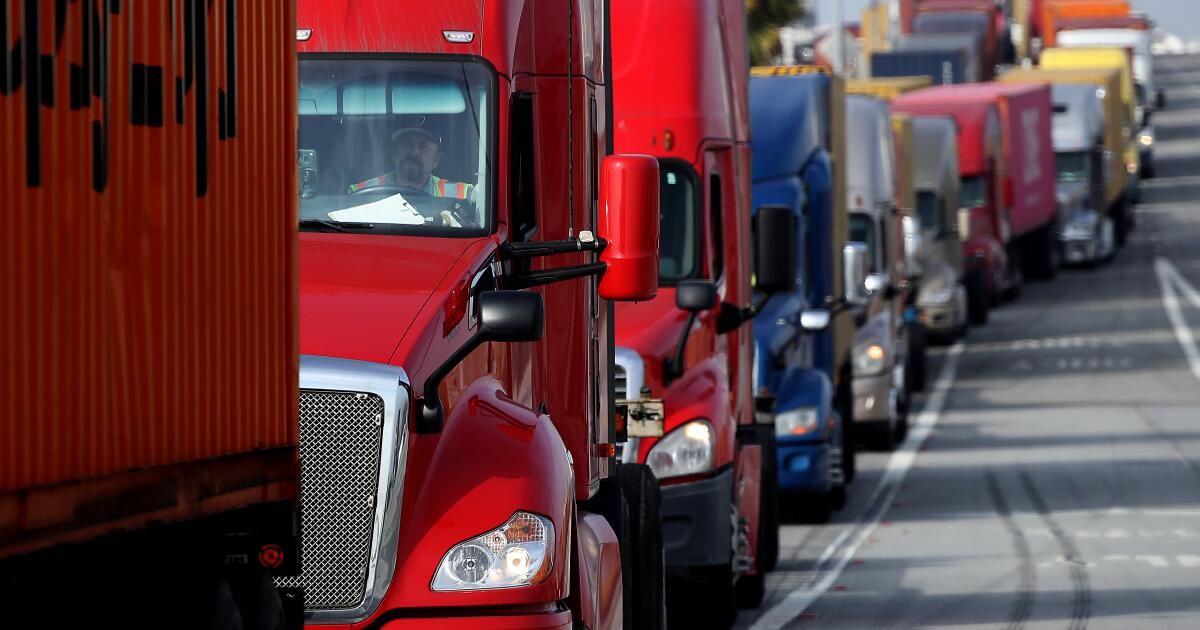The U.S. Environmental Protection Agency on Friday issued tough new emissions standards for heavy-duty trucks and buses, aiming to reduce air pollution, address climate change and boost economic growth.
The new federal rules will reduce one billion tons of greenhouse gas emissions each year and provide financial benefits worth $13 billion a year “related to public health, climate and savings for business owners and operators.” trucks.” They include large trucks, delivery trucks, cement mixers, garbage trucks, transit buses, and school buses.
The California government enacted similar rules last year. The state's rules are stricter than those of the Biden administration and are expected to remain so. California's rules will supersede federal regulations for large truck fleets that operate within the state, whether registered in California or not.
Unlike California rules, which require new battery-electric and fuel cell trucks to be sold at increasing rates through 2042, federal rules allow greater fuel flexibility as long as air emissions standards are met. Technically, gasoline, diesel, biodiesel, hydrogen and electric trucks would be allowed, but even the EPA acknowledged that the current rules will require a huge increase in the number of electric trucks.
Aggressive and impactful reporting on climate change, the environment, health and science.
Those rules are similar to rules on passenger cars and trucks finalized last week that do not require specific technologies but will also result in a rapid increase in the number of electric vehicles that manufacturers will be able to sell. California's rules are also stricter for new cars and trucks, with mandates that increase the percentage sold to 100% by 2035.
A dozen other states plan to follow California's lead on transportation emissions.
Transportation is a major contributor to greenhouse gas emissions: 29% of all emissions in the United States and almost 50% in California, whose electric power sector is cleaner than the country as a whole. .
It is also a major source of pollution that directly degrades public health, especially near ports and along densely populated major transportation corridors.
“Exposure to traffic-related pollution is a serious health hazard for those who live in communities with heavy truck traffic,” Harold Wimmer, head of the American Lung Association, said Friday. “Mixed emissions have been linked to poor birth outcomes, reduced lung and cognitive development, development and worsening of chronic respiratory and cardiovascular diseases, and increased risk of dementia, cancer, and premature death.”
Wimmer added that the American Lung Assn. estimates that the transition to zero-emission trucks and electricity could save nearly 67,000 lives by 2050.
The transition will be costly. Right now, large electric trucks cost two to three times the cost of a diesel truck: up to $500,000. A recent study of the trucking industry found that moving to a 100% emissions-free truck fleet across the United States by 2050 would cost more than $1 trillion, including not just the trucks but thousands of new charging stations. and the capacity of the electrical system to power them.
Rules forcing technological change could lead to much lower costs as manufacturing increases, advocates say.
“EPA's new heavy-duty vehicle standards represent a step toward reducing emissions and advancing the transition to zero-emission freight transportation, providing a needed signal for investment in charging infrastructure and bolstering manufacturing.” to meet 2030 climate goals,” said CEO John Boesel. from CALSTART, a clean transportation advocacy group.
“This regulation will stimulate investment and innovation that will result in accelerated growth of the national zero-emission commercial vehicle industry. In the long term, this regulation will create and protect jobs, while making the air cleaner and healthier for everyone,” Boesel said.
Truck manufacturers praised the flexibility of national standards.
“Ultimately, the successful transition of the commercial vehicle industry depends on the availability of reliable zero-emission charging and refueling infrastructure and the ability to conduct business at a reasonable cost of ownership,” said Sean Waters, executive at Daimler Truck North America. . “We appreciate the regulation's recognition of this fact and look forward to working with EPA and the federal and state governments to achieve both.”
Jim Ward, president of the Truckload Carriers Association, had a similar reaction: “The path ahead offers many alternatives to consider to reduce carbon emissions, such as blended biodiesel, renewable natural gas, diesel-electric, just to name a few. To name a few, even help us close the gap to the future.”
However, the industry will have to deal with the differences between California's zero-emissions mandates and the looser federal rules, so there is plenty of political lobbying and political controversy ahead.










